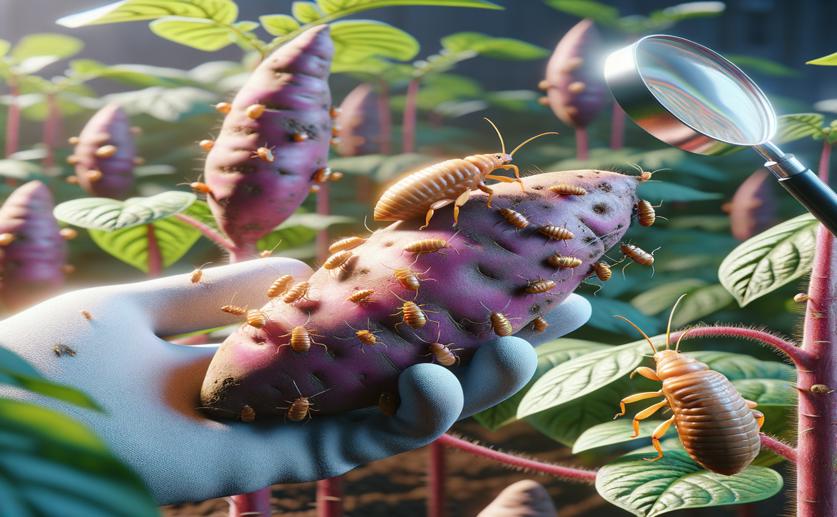
Gene-Silencing Technique for Pest Control in Sweet Potato Weevils
Jenn Hoskins
13th June, 2024

Image Source: Natural Science News, 2024
Key Findings
- The study by the Chinese Academy of Agricultural Sciences explored RNA interference (RNAi) as an eco-friendly method to control sweet potato weevils
- Researchers targeted the Troponin I gene (wupA), crucial for weevil muscle function, and found it highly expressed in all developmental stages
- Using double-stranded RNAs (dsRNAs) to silence wupA significantly reduced gene expression and caused high mortality in weevil larvae, without harming non-target insects like silkworms
References
Main Study
1) RNAi-mediated pest control targeting the Troponin I (wupA) gene in sweet potato weevil, Cylas formicarius.
Published 11th June, 2024
https://doi.org/10.1111/1744-7917.13403
Related Studies
2) RNA interference-based resistance in transgenic tomato plants against Tomato yellow leaf curl virus-Oman (TYLCV-OM) and its associated betasatellite.
3) Delivery of lethal dsRNAs in insect diets by branched amphiphilic peptide capsules.
4) Segregation of Hydroxycinnamic Acid Esters Mediating Sweetpotato Weevil Resistance in Storage Roots of Sweetpotato.



 21st March, 2024 | Greg Howard
21st March, 2024 | Greg Howard